- Home >
- Blog >
- spanish-wines-tips >
- All about the wines of Spain
The History of Wine in Spain
Like many other countries on the old continent, the Iberian Peninsula has a rich and varied history when it comes to its wine. The wine landscape as we know it today is the result of centuries of work. The first traces of vineyards date back to the time of the Phoenicians on the Andalusian coast, near Cadiz. They then developed viticulture inland and began to export the production throughout the Mediterranean. But it is really under the impulse of the Romans that the vineyard grew. With the development of the empire, the Romans needed wine and the peninsula was no exception to the rule; the surface of the vineyard and its production increased and with it its marketing.
After the fall of the empire, and the arrival of the Moors in the Iberian lands, the vineyard declined. Alcohol being forbidden by the Muslim religion, the vineyard was reduced and the production refocused on table grapes and unfermented fruit juice. It was not until the end of the 15th century that the vineyard grew again and regained its former popularity. However, as everywhere in Europe, the arrival of phylloxera will reduce to nothing or almost, all the efforts made by the former generations. This disease of the vine caused so much devastation that the Spanish viticulture as a whole took time to recover. But since the end of the 1980s/1990s, a change and a new era for the wine landscape can be observed throughout Spain, making Spain the first vineyard in the world in terms of surface area. Here is a brief overview of the best Spanish wine regions.
The wine regions of Spain
With wine produced in all regions including the islands, Spain offers a multitude of choices and desires. The climate being rather warm, even if there are some exceptions, each wine region offers quality wines. Method of cultivation, wine making, planted grape varieties, everything is there to make this vineyard a subject worthy of interest. And depending on where you are, you will find particularities that make you want to discover the secrets and better understand an oenological world that is often unknown outside your country. To understand wine and before starting our journey, some explanations and terms are necessary to see more clearly. The classification of wines includes table wines, vins de pays, DO and DOC. We will not dwell on the first two, which are found just about everywhere and which have fairly broad production rules. For the DO (denomination of origin), these were created in 1932, and there are now 65 of them. On the DOC side (Denomination of Controlled Origin) there are only two in the whole country, the Rioja wines in 1991 and the Priorat wines in 2000. Two systems capable of highlighting regions and wines and, above all, people capable of highlighting exceptional terroirs that give them the beauty and international recognition that they deserve. A small overview of the wine producing areas in the land of paella.
Discover here
all the wine regions of SpainGalicia
Located in the northwest, the climate is oceanic with the influence of the Atlantic. The soils are both granitic and clayey. In terms of viticulture and vineyard management, two methods exist: short pruning and high pruning (called parrales) which protects the vines from humidity. There are 5 DOs, of which Rias Baixas is the best known. Rather white wine soils, but the reds produced are interesting.
Castilla y Leon
One of the wine regions of Spain that includes most of the best known appellations of the peninsula. With 10 DOs and part of the DOC Rioja, it is a vineyard of primary importance. To the west, not far from the Portuguese border, is the Toro. It has been a DO since 1987 and mainly grows varieties such as Tinta de Toro (Tempranillo), Garnacha or Verdejo for the whites. Further east, we find the DO Ribera del Duero. DO recognized since 1982, the main grape variety is Tinto Fino (Tempranillo) and one of the most famous wineries is undoubtedly Vega Sicilia and its famous "Unico" vintage. Other appellations such as Rueda, Bierzo are becoming more and more famous.
La Rioja
With Priorat, it is the only two DOCs in Spain. Located in the northeast of Castilla y León,
the Rioja wine region is a DOC that extends into other wine regions (Castilla y León, Navarra). DOC since 1991, it is divided into 3 sub-regions: Rioja Alta, Rioja Alevesa and Rioja Baja; each of which offers a different style of Rioja. Mostly Tempranillo, Grenache and Mazuelo (Carignan) are grown. If we look closely at the labels and seals, we can see that the DOC is classified into 4 types of wines: Rioja, Rioja Crianza, Rioja Reserva and Rioja Gran Reserva.
Navarra
It is a little known region of Spain, located in the north of the country. Even if it produces as many red wines as white wines, the local wine world owes its recognition outside the borders to its red wines, composed mainly of Tempranillo and Grenache.
Spanish Basque Country
A little further north, on the border with France and on the Atlantic coast, is this region, also little known in the wine world. Txakoli is the local pride. White wine, slightly effervescent with low alcohol content, is produced mostly from hondarribi zuri, the native grape variety.
Aragon
Located around the city of Zaragoza, this vineyard is little known outside the borders. It has four denominations of origin and six geographical indications. The most famous DO is that of Calatayud, which covers 8000ha.
Catalonia
Like most other wine-producing regions,
Catalonia has been a wine-producing region since ancient times. The Muslim domination and the reconquest, like many vineyards, will forge the vineyard before the phylloxera destroyed almost everything. With several subdivisions, Catalonia is a rich wine region whose emblem is the Priorat. DO since 1954 and DOC since 2006, it is the other great vineyard of Spain. Its history begins in the 12th century, under the aegis of the monks of the Carthusian monastery of Scala dei, who will make the vineyard evolve until the end of the 19th century, when the monks will be deposed from their property. It was during this same period that phylloxera ravaged the vineyard. It was not until the 80s and 90s, with the arrival of winemakers such as René Barbier and Alvaro Palacios, that the vineyard was reborn. Varieties such as Grenache, Carignan and Cabernet are grown here.
Castile and La Mancha
Located south of Madrid, this region boasts the largest wine region in the world with over 600,000 hectares of vineyards. Even though its vineyards are less well known today, the wines enjoyed a great reputation in the 16th and 17th centuries as they were served at the King's court.
Extremadura
On the border with Portugal, this wine region remains little known but produces wines of great quality. There are two appellations: Cava and Ribera del Guardiana with its subzones. There are grape varieties such as Grenache for the reds and Pedro-Ximenez for the whites.
Valencia
On the shores of the Mediterranean Sea, this wine region has been known since Neolithic times. Its fame goes back to the Middle Ages. Grape varieties such as Grenache, Monastrell for the reds and Pedro-Ximenez, Malvasia and Moscatel for the whites are cultivated.
Murcia
Located in the south of Valencia's vineyards, the wine reputation of this region comes from its emblematic grape variety, the Monastrell. Once used to fortify other wines that lacked substance, the wines made from this variety in the region reveal the full potential of this land.
Andalusia
The oldest vineyard in Spain, its origins go back several centuries and even well before the birth of Christ, since writings attest to the trade of wine with the Greeks and Phoenicians. Even though the vineyard diminished a little during the Muslim domination, it remained important. And then after the reconquest, its expansion will come thanks to the English and Dutch merchants who were fond of these wines. Unlike many other wine regions, the Andalusian vineyard produces mainly mutated or fortified wines based on white grape varieties, which constitute the majority of its production.
A few words about Spanish grape varieties
Surely one of the greatest strengths of this vineyard, the diversity of grape varieties in the Iberian viticulture allows a wide choice of wine styles. If we find international varieties such as Syrah, Merlot or Chardonnay, it is truly the indigenous plants that carry the colors of Spain : The Tempranillo, which depending on where you are, is called Tinto Fino, Tinta de Toto or Tinto del Pais, brings fruitiness and structure.
There are also many varieties such as Grenache, Carignan, Mourvèdre. Even if they are well known in France, they were born in Spain. Often imagined as a land of red wines, we also discover wonderful white wines made from grape varieties such as Albarino, Godello, Verdejo.
Discover all our best Spanish wines on the online store
Find all our articles about Spanish wines:
Top 10 of the best Spanish wines
Which Spanish wine for which dish? Alfavin.ch gives you its ideas!
How to choose a Spanish wine ? Alfavin.ch advises you
Our wines linked to this post
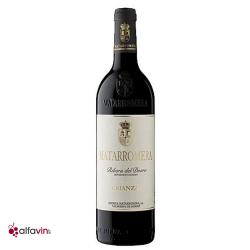
29.50 CHF
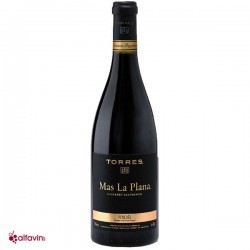
63.00 CHF
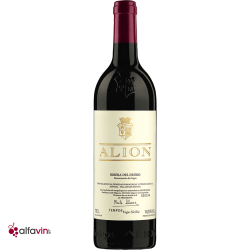
96.00 CHF

63.00 CHF
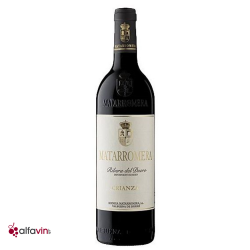
29.50 CHF
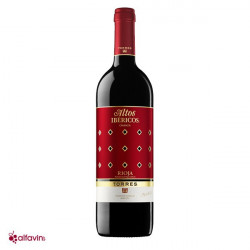
14.50 CHF












